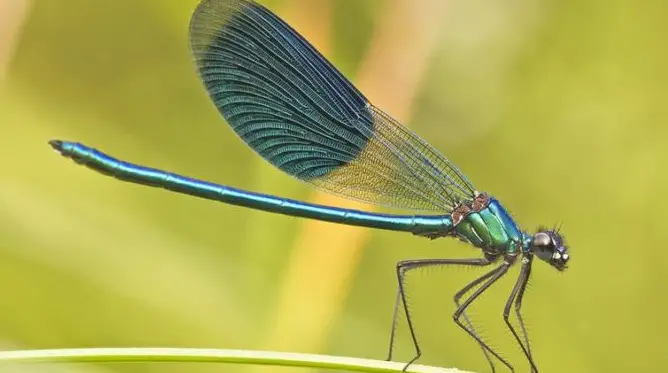In every species of insect there are highly ranked predators. Among mammals, there are lions and sharks, which are considered to be the highest ranked predators. When it comes to insects, they are amateurs compared to the superior insect hunter. Introducing the Dragonfly – an efficient killing machine, made directly from nature itself. The dragonfly has an irreplaceable flying technique, it has spiked jaws that prevent the prey from escaping.
Dragonflies can predict the next position of prey
The dragonfly has excellent intelligence abilities, it can predict the future position of the prey. For example, when people play football, they can calculate the path of the ball and thus successfully catch it on time. Scientists believed that this process was a complex brain activity. It is a process of calculating the distance, direction and speed of the ball. This ability is not possessed by the lion, for example, although it is considered a powerful and intelligent predator, it is not able to predict the direction of movement of prey. When scientists did research on dragonflies, they tracked dragonflies with a camera, so research showed that insects could intercept their prey instead of following it, which clearly led to the conclusion that these were extremely intelligent insects that could predict the next position of prey.
Dragonflies have selective attention
Until recently, scientists who studied the abilities of humans and animals believed that only humans and apes had the ability to focus on one thing at a time, while excluding everything that happened around them. When the same scientists conducted a study in which they tested the dragonflies, they came to the conclusion that they have the same ability. They confirmed this claim when they noticed that while a dragonfly faces a swarm of insects, it focuses entirely on a single victim, without dealing with the environment. The scientists then performed a physical examination of the dragonfly, using a probe to measure the neural activity of the dragonfly. Thus they found that dragonflies have the capacity for selective attention. Given the fact that dragonfly prey most often flies in swarms, this ability is considered an advantage.
The eyes of the dragonfly provide panoramic vision
As with most insects, dragonflies’ eyes are made up of many individual oli or ommatidia, so each cell contains one sensory cell. In comparison, the fly has 6,000 “ommatidia”, and the dragonfly has as many as 30,000 “ommatidia”. The advantage is more than clear. This allows the dragonfly to see the whole environment while focusing on a single victim at a glance. Also the dragonfly has 4-5 opsins. Opsins are proteins that are sensitive to light. By comparison, humans have only 3 such opsins. In the upper part of the eye the dragonflies have opsins that can detect blue and UV light, and in the lower part green and orange. Dragonflies can detect UV light that is invisible to the human eye.
The dragonfly has no blind spots on the eyes
The dragonflies, which have large and prominent eyes, are contained in 2 hemispheres that have a 360 degree view. While other insects do not have the ability to see what is happening behind or below them, the dragonfly can see its enemies and escape them from whichever side they try to attack, thanks to its 360 degree view.
The jaws break the prey
Dragonflies have strong and sharp jaws, which easily break the prey. Their attack consists of catching the prey with its front legs, then cutting off its wings to prevent it from escaping, and then biting off its head. The jaws of the dragonfly are quite firm and strong that they can open quite wide and eat even large insects. The dragonfly has the ability to eat prey in flight. Even when dragonflies die, they do not stop eating, for example, scientists have found examples of dragonflies being entangled in a spider web that ate the spider.
Dragonflies have the perfect biological helicopter
The uniqueness of the wings of the dragonflies is incredible. They serve as the inspiration for the creation of US and NASA drones. Dragonflies have light, stiff but also flexible wings at the same time. They can move their four wings independently of each other, allowing the dragonfly to change direction very quickly. Dragonflies can also fly upside down if needed.


